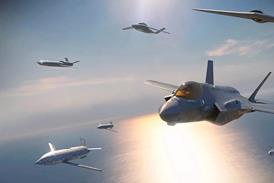All Nippon Airways parent ANA Holdings has reiterated its commitment to achieving a full year operating profit of Y200 billion ($1.8 billion) in its 2020 fiscal year.
This goal represents a 37% improvement from an operating profit of Y146 billion achieved for its 2016 fiscal year ended 31 March. Another key target is achieving 40% higher passenger and cargo revenue by 2020.
Achievement of this profit goal relies on increasing profits from ANA on international routes, maintaining domestic market share, "significant" revenue growth in its low-cost carrier affiliates, and "maintaining healthy growth" in its cargo operation.
ANA discuss its strategy in an update to its FY2016-2020 Mid-Term Management Strategy document.
"ANA Holdings will also continue to implement rigorous cost management and accelerate operational improvements, strengthening preparations for the next stage of growth from 2020 onwards," it says.
In terms of capacity, the ANA fleet will grow to 335 aircraft in 2020 from 268 aircraft now. ANA says this represents a 35 aircraft addition from previous plans. Most of this will be deployed internationally, with the carrier focused on maintaining domestic revenues and capacity.
It adds that extra takeoff and landing slots at Tokyo's airports in preparation for the 2020 Tokyo Olympic Games will help facilitate this growth.
"Although competition in the global LCC market is increasing, in Northeast Asia there is potential for further market growth and expansion," says ANA.
"ANA Holdings benefits from the independent brands of Vanilla Air and Peach, which provide a service distinct from full service carriers. This allows ANA to tap into previously unrealized domestic demand and provides options for international travellers looking to explore Japan."
For its 2017 fiscal year ending 31 March 2018, it foresees Vanilla's fleet growing to 15 Airbus A320 aircraft from 12 now, and Peach's fleet growing to 20 A320s from 18 now. ANA owns 100% of Vanilla, and a 38.7% controlling stake of Peach.
It's LCC strategy includes entry into the "medium-haul" LCC market, expansion into new airports such as Sendai, Shin-Chitose, and Hokkaido, the pursuit of efficiencies between the LCC units. These efficiencies include shared facilities, infrastructure, and maintenance.
It adds, though, that the future will pose challenges.
"Uncertainty in international markets remains difficult to predict, including rapid fluctuations in foreign exchange and crude oil markets, the rise of protectionism in the United States, the UK's departure from the European Union and geopolitical risks including those involving North Korea," says ANA.
"In this environment, it is also expected that competition with other airlines and modes of transport will become increasingly intense."
Source: Cirium Dashboard























